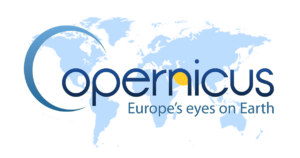Introduction
QGIS is a powerful open-source GIS platform that integrates seamlessly with the Copernicus Earth observation program. Through direct access to Sentinel satellite imagery and related services, QGIS enables users to monitor land use, assess environmental change, and support evidence-based planning. That’s why QGIS with Copernicus data is essential for professionals in environmental science, urban planning, disaster management, and sustainability projects.

With QGIS, you can search, download, and process Copernicus data to analyze vegetation, track urban growth, and monitor climate-related impacts. Its geospatial tools—combined with Copernicus datasets—make it possible to turn vast amounts of satellite imagery into clear, actionable insights.
But QGIS isn’t just about visualizing data. With dedicated plugins and processing tools, you can automate workflows, classify land cover, and generate time-series analyses to detect changes across landscapes. Whether you’re mapping deforestation, monitoring air quality, or assessing flood risks, QGIS and Copernicus together give you the tools to transform raw data into meaningful knowledge.
Want to start using QGIS with Copernicus data? In our Blended Learning QGIS Copernicus course, you’ll combine flexible study with guided sessions to develop both your technical skills and your ability to apply satellite data in real-world scenarios.
What will you learn in this blended learning course?
This course introduces you to QGIS with a focus on Earth observation and Copernicus applications. You’ll learn to access, process, and interpret satellite data to address environmental and spatial challenges.
You’ll begin by exploring the QGIS interface, GIS fundamentals, and the Copernicus Open Access Hub. Next, you’ll practice downloading and managing Sentinel imagery, working with raster data, and applying corrections for accurate analysis.
From there, you’ll move into practical applications: analyzing land cover change, monitoring vegetation indices (NDVI), and assessing urban expansion. You’ll also explore how Copernicus data supports climate resilience and disaster response.
To wrap up, you’ll learn best practices for integrating Copernicus data into workflows, and you’ll apply your skills in a hands-on project, producing professional-quality outputs like land use maps and environmental monitoring reports.
By the end, you’ll be ready to work independently—using QGIS and Copernicus data to tackle real-world spatial analysis tasks with confidence.
Why choose this QGIS Copernicus course?
Blended learning gives you the best of both worlds—live interaction and flexible self-paced study—so you can build job-ready GIS and remote sensing skills on your own terms. In this course, you’ll get hands-on with QGIS and learn to translate raw satellite imagery into insights that matter.
We kick off with a live session, where you’ll dive into QGIS and Copernicus data, guided by expert trainers. You’ll start by searching and importing Sentinel imagery, then move into visualizing and preprocessing datasets.
Then, progress through the self-paced modules at your own speed. You’ll practice analyzing time-series satellite data, classifying land cover, and applying Copernicus products in thematic studies.
In a second live session, you’ll apply your skills to a real-world scenario—such as monitoring environmental change or assessing urban development. You’ll troubleshoot issues, refine your outputs, and get feedback from trainers to sharpen your analysis.
One standout feature of the course is its practical focus. You’ll create ready-to-use outputs—like vegetation monitoring maps, land use change assessments, and urban growth analyses—that can directly support policy-making, research, or environmental management.
By the end, you’ll be confident using QGIS with Copernicus data to support smarter, evidence-based decision-making in sustainability, planning, and disaster risk management.

